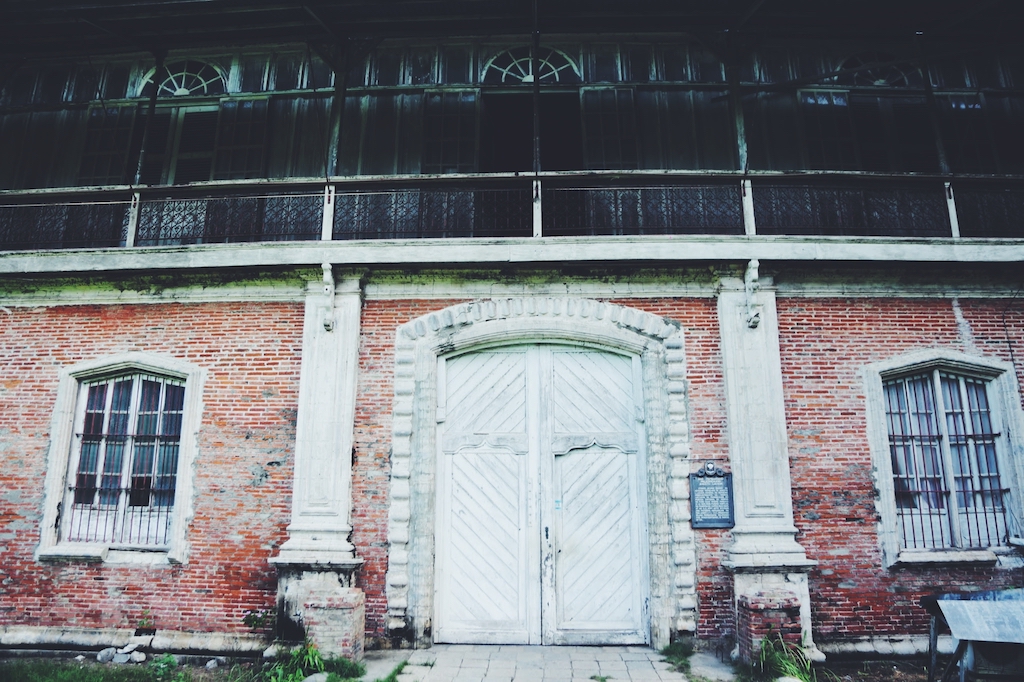Here’s a feature on another ancestral home in the Philippines, the Gen. Aniceto Lacson Ancestral Home. A significant part of Negrense history, the mansion is also known as the country’s first Presidential house. Read the original article on Negros Season of Culture here.

Nestled within a grove of trees in Talisay City, Negros Occidental, stands the General Aniceto Lacson Ancestral Home, sometimes referred to as Casa Grande. Although looking empty now, one is struck by the house’s evident style and grandeur. Despite the loss of its roof in a typhoon in the 1970s and its woodwork showing signs of time’s relentless march, Casa Grande retains a remarkably stately perspective.
It is also a unique survivor of a pivotal moment in Philippine history. Unknown to many, the General Aniceto Lacson Ancestral Home was the first Presidential house in the Philippines.

A Brief History
The house was built in 1880 by Gen. Aniceto Lacson, a katipunero who, together with Gen. Juan Araneta of Bago, successfully led a province-wide revolt against the Spanish on November 5, 1898. When the Spanish surrendered, Gen. Lacson was elected President of the short-lived Rupublica Cantonal de Negros, or the Cantonal Republic of Negros. While Malacañang Palace was still being used by the Philippines’ Spanish, and later American, colonizers, the General Aniceto Lacson Ancestral Home became the first Filipino Presidential residence.
This independence lasted just three months and four days before Gen. Lacson and his fellow revolutionaries were obliged to surrender to the presence of overwhelming American forces in Manila. The Treaty of Paris had ceded the Spanish colonies of Guam, Puerto Rico, and the Philippines to the U.S. at the end of the Spanish-American War of 1898.
Born in 1857, Aniceto Ledesma Lacson studied at the Ateneo de Manila Municipal together with his cousin and future comrade-in-arm, Juan Araneta. It was also here where he met Jose Rizal. Later, Lacson took part in a blood compact with the revolutionary leader Andres Bonifacio. The only Negrense to have done so, Lacson sealed his role as one of the prime movers in the establishment of a free and independent Philippines.
Gen. Aniceto Lacson was universally respected amongst the Negrense and Spanish alike. He was an innovator in sugar cane production and showed considerable humanity during the 1898 revolution, reputedly saving the lives of Spanish friars. With characteristic modesty, he declined to adopt the title of Marques, bestowed by the King of Spain in recognition of this act.
The Hacienda House
In architectural terms, the house has been described by Fernando Zialcita, head of the cultural heritage studies of the Ateneo de Manila University, as representative of the late 19th-century floral style. The ground floor is constructed mainly of brick and coral stone, building materials common in the Philippines. Heritage houses in Negros follow the bahay-na-bato (house made of stone) architecture style, a type of construction that is now prohibited on environmental grounds.

The second floor is constructed mostly of Philippine hardwood, such as tindalo, balayong, and molave, and it is said that specialist woodworkers were brought over from China to do the intricate carvings. Remarkably, despite turbulent times, the woodwork survived throughout much of the house, but especially in the imposing grand staircase, which is reportedly grander than that of the Malacañang Palace.

Also surviving is an impressive wrap-around veranda from where the residents of the house could gaze across the sweep of the plantation attended to by sugarcane workers. “It’s the only… bahay-na-bato that has a veranda that goes all around the house”, says Carmen Rossello, one of the General’s great-grandchildren. “That’s what makes this house very, very unique compared to all the other bahay-na-bato.”

Perhaps another important feature is the chapel on the ground floor. According to his descendants, the altar was commissioned and made in Spain. It is also said that during WWII the Filipino guerillas, not wanting the house to be occupied by the Japanese, planned to burn it, but changed their minds when they realized that there was a chapel inside.

A Place in History
“This house is extremely important to preserve because it’s one-of-a-kind in the whole Philippines. I want to preserve this house so that the future generations of this country can enjoy it.”
Anna Balcells
It was thus entirely fitting that in 2002, the General Aniceto Lacson Ancestral Home was declared a National Historic Landmark by the National Historic Institute, in the hope that future generations would cherish this unique part of the Negrense and Filipino heritage.
Sadly, like so many historical houses in the Philippines, time is eroding this significant landmark. Thus, the present owners and descendants established the General Aniceto Lacson Ancestral Home Foundation (GALAH) to ensure that the house won’t fall into ruin.

“This house is extremely important to preserve because it’s one-of-a-kind in the whole Philippines,” says Anna Balcells, a great-grandchild and President of GALAH. “I want to preserve this house so that the future generations of this country can enjoy it.”
To this day, Gen. Aniceto Lacson is celebrated and remembered every 5th of November, Cinco de Noviembre, the day that he and Gen. Juan Araneta led the people of Negros to secure the surrender of Spanish colonizers. It is his descendants’ hope that the General Aniceto Lacson Ancestral Home will be restored to its former glory and ensure that its history lives on.
Have you been to the Gen. Aniceto Lacson Mansion? Tell us about it!
Follow us on our social media spaces: Facebook and Instagram.
Note: All photos that appear in this post are owned by Negros Season of Culture.


